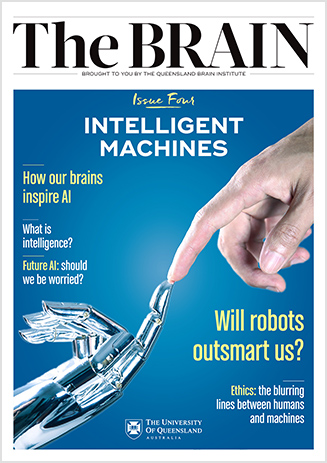Can a robot make a cup of coffee in your kitchen. This basic test is yet to be passed.
Our brains exist to help us survive. Organisms that don't have a brain, like bacteria or jellyfish, can still find food and evade predators.
But with a brain, survival is more likely because we can remember where food is found, due to the hippocampus; plan a route that avoids danger, thanks to the prefrontal cortex; and prioritise memories with emotional significance, courtesy of the amygdala.
These cognitive abilities wouldn’t be so helpful, though, if we couldn't move. So, without having a body to move around and manipulate its environment, could AI ever be as intelligent as a human?
Some scientists believe intelligence, as we know it, is so intricately connected with our bodies that building robots is the surest way to create truly intelligent machines.
Robot reality: not so intelligent
Robots are machines that can automatically carry out a complex series of actions, particularly those programmed with sophisticated computer algorithms. Computers have been growing exponentially in power and speed ever since their invention more than 70 years ago.
Today even a smartphone can perform more than a billion calculations per second. Our biggest supercomputers are capable of 100,000 trillion calculations every second – equivalent to tens of millions of smartphones working simultaneously.
Why then are computers still mostly boxes with screens and maybe keyboards attached? Why don’t we have computer-controlled robot servants that can, for example, bring us breakfast and clean our houses?
Modern robots can be agile enough to perform such tasks – the Atlas robot from Boston Dynamics is an example. So, physical limitations are not the issue.
The problem is our current best robots, and the computers powering their ‘brains’, are bad at making sense of the world.
Computers excel at performing precise calculations at lightning speed, but struggle with simple real-world tasks, like turning on a tap, folding a towel or finding and picking up an object. A well-known benchmark in robotics research is the ‘coffee test’: can a robot enter a house it hasn’t seen before and make a cup of coffee?
This simple-sounding task includes many steps that are difficult, even impossible, for current robots. They would need to know what any kitchen could look like and be able to find it in any house.
Then they’d need to open cupboards, find the coffee, identify and pick up a spoon from a drawer, find the kettle and sink, position the kettle to fill it with the right amount of water by operating the taps, and so on.
Such tasks are beyond the capabilities of current technology. The real world is too complex and variable to program a robot to successfully complete most of these steps. The solution is to build robots that can learn.

